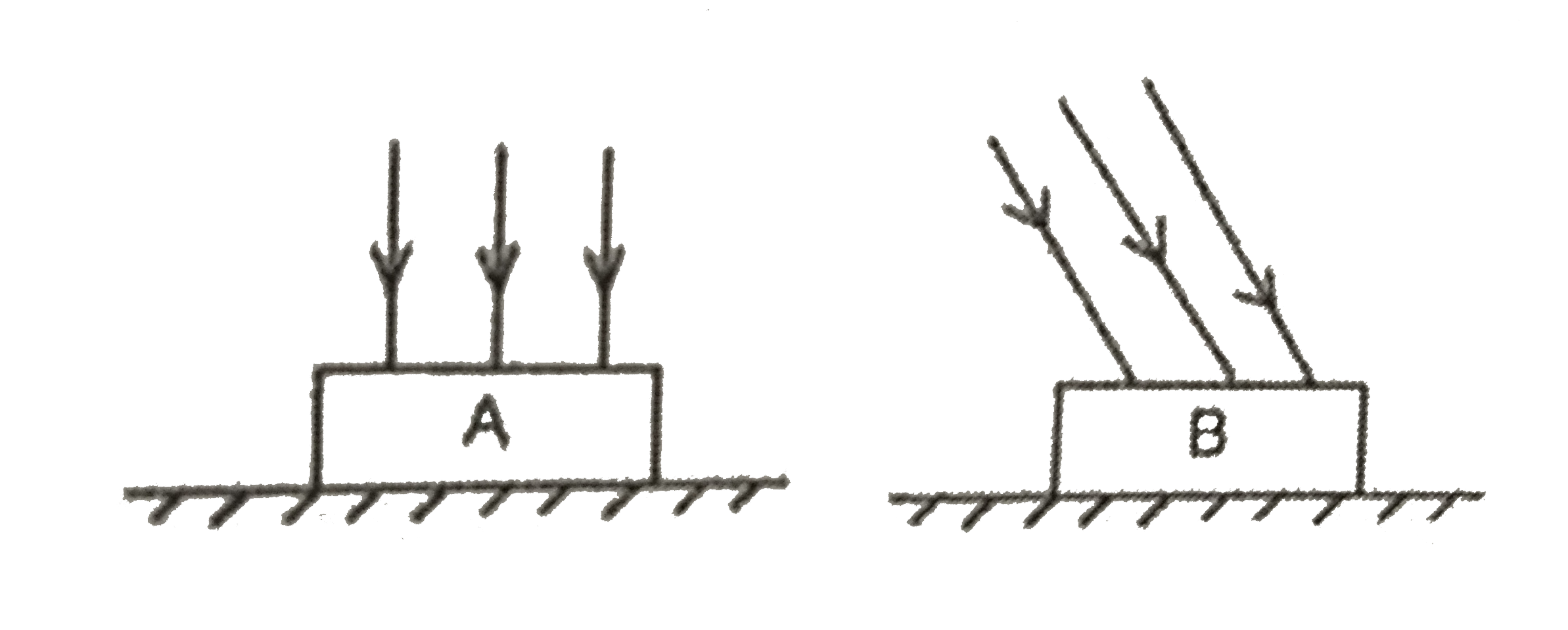X-ray falling on a meterial
exterts a force it
transfers energy to it
transfers momentum to it
transfers impulse to it
The correct Answer is:A, B, C, D
Photon exerts force due to change in momentum photon transfers its energy to the material. Photon transfers its energy to the material. Since, it exerts force, hecnce imaprts impulse also.
Topper's Solved these Questions
- ATOMIC PHYSICSBOOK - RESONANCECHAPTER - ATOMIC PHYSICSEXERCISE - Exercise-2 Part-III : Comprehension
12 Videos
- ATOMIC PHYSICSBOOK - RESONANCECHAPTER - ATOMIC PHYSICSEXERCISE - Exercise -3 part -I JEE (Advanced)
86 Videos
- ATOMIC PHYSICSBOOK - RESONANCECHAPTER - ATOMIC PHYSICSEXERCISE - Exercise-2 part-II Single and double value integer type
12 Videos
- ALTERNATING CURRENTBOOK - RESONANCECHAPTER - ALTERNATING CURRENTEXERCISE - HIGH LEVEL PROBLEMS
11 Videos
- CAPACITANCEBOOK - RESONANCECHAPTER - CAPACITANCEEXERCISE - High Level Problems
16 Videos
Similar Questions
The wavelength of Kα and Lα X-rays of a meterial are 21*3 pm and 141 pm respectively. Find the wavelength of Kβ X-ray of the material.
View SolutionFind the angle of refraction for a ray of light falling on a transparent medium of refractive index 1.6.
The reflected and refracted rays are perpendicular to each other.
View Solution
Knowledge Check
Light of frequency v falls on meterial of threshold frequency v0. Maximum kinetic energy of emitted electron is proportional to
Av−v0BvC√v−v0Dv0Statement-1: Gamma rays are more energetic than X-rays.
Statement-2: Gamma rays are of nuclear origin but x-rays are produced due to sudden deceleration of high energy electrons while falling on metal of high atomic number.AStatement-1 is true, Statement-2 is true, Statement-2 is a correct explanation of Statement-1.BStatement-1 is true, Statement-2 is true, Statement-2 is not correct explanation of Statement-1.CStatement-1 is true, Statement -2 is false.DStatement-1 is false, Statement -2 is true.The sun's rays are falling on two identical ice blocks as shown in the figure Then
 Ablock a starts melting firstBblock b starts melting firstCboth starts melting at the same timeDcannot be campared
Ablock a starts melting firstBblock b starts melting firstCboth starts melting at the same timeDcannot be campared
A ray of light travelling in water falls at right angles to the boundary of a parallel-sided glass block. The ray of light:
View SolutionA light ray falls on the air glass interface at an angle of 30∘. What is the angle of refraction for this rays ? (nag=32).
View SolutionA concave lens diverges the rays of light falling on it. Give reason
View SolutionThe sun's rays are falling on two identical ice blocks as shown in the figure Then

View SolutionIf a ray of light falling on a mirror makes an angle of 60∘ with the mirror, then the angle between the incident and reflected rays will be ______.
View Solution
